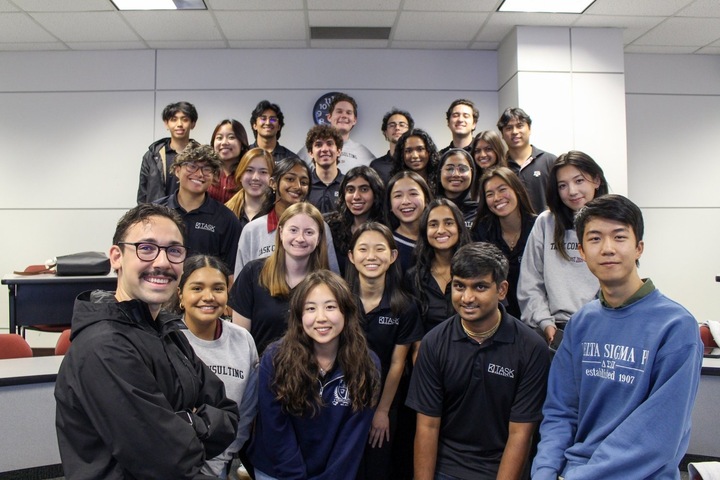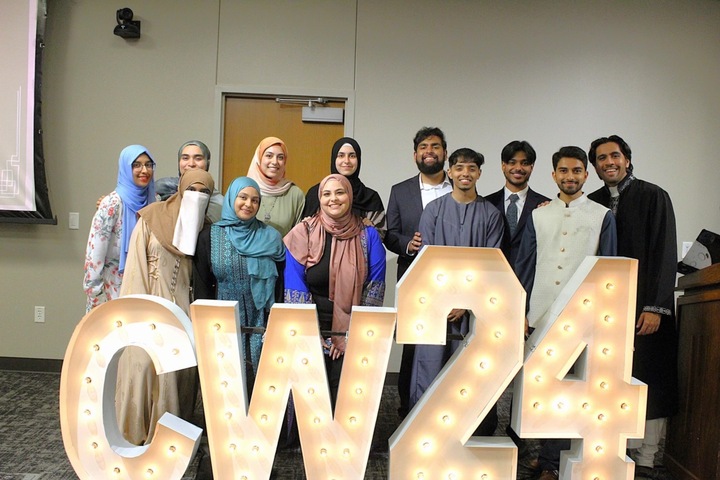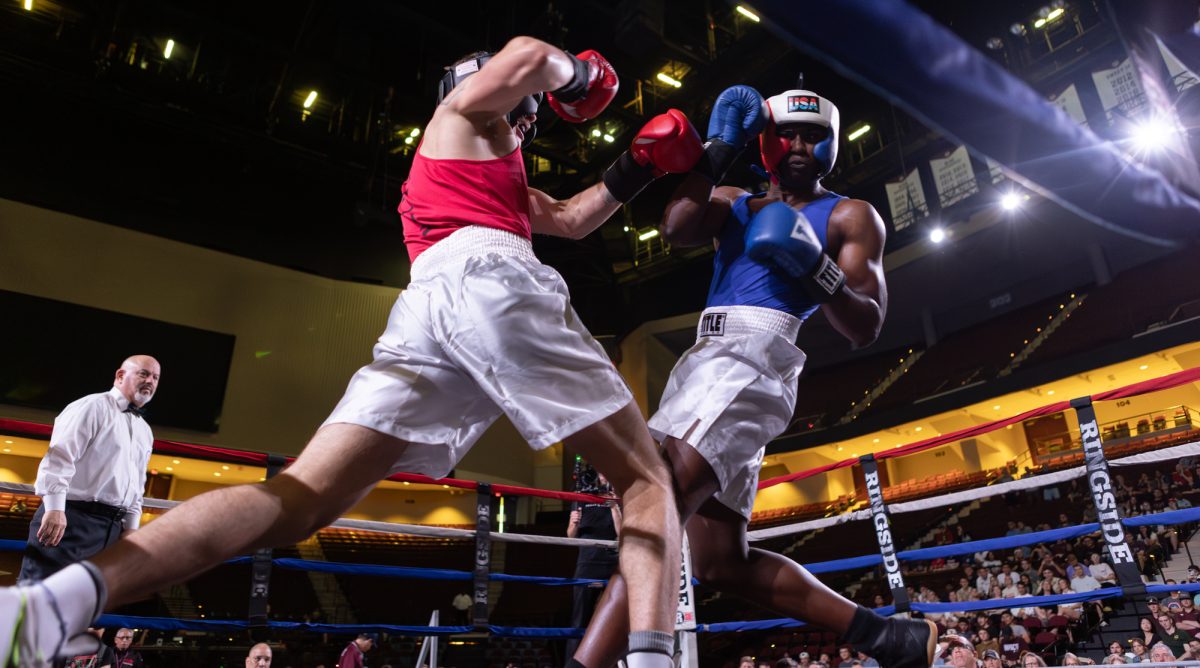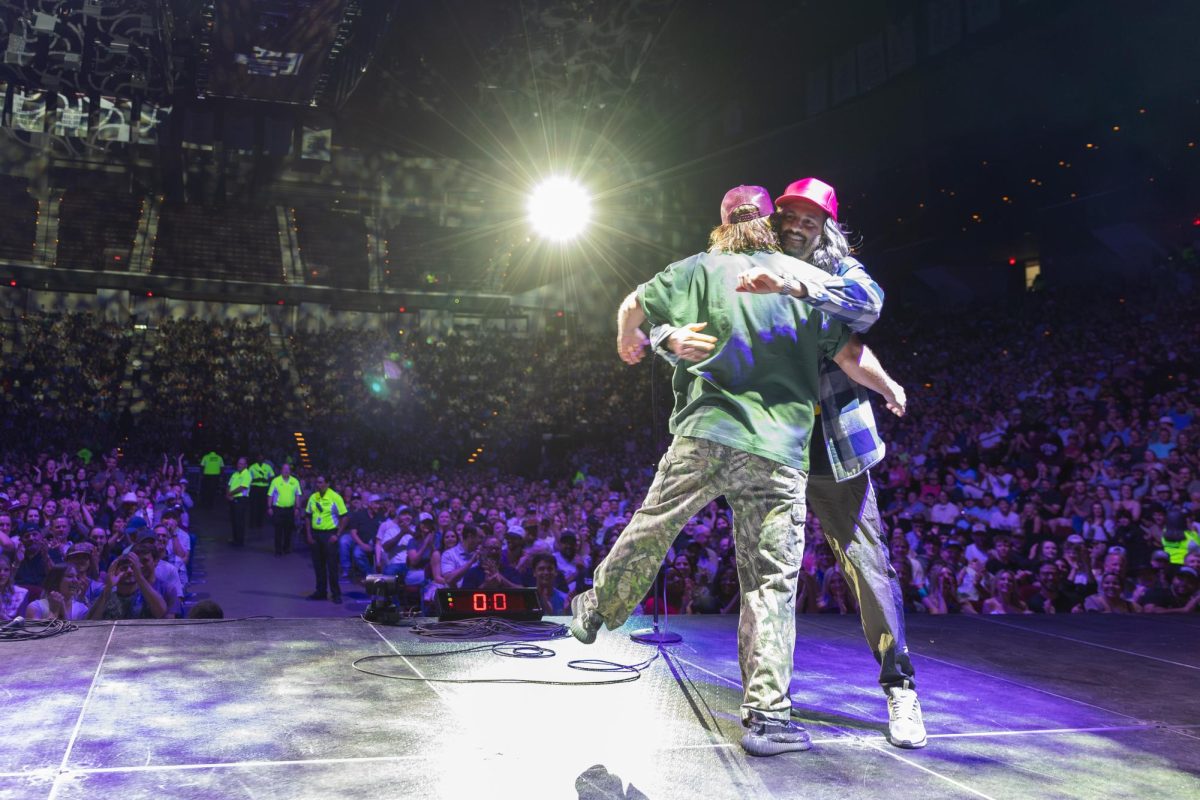From the trademark mustache to otherworldly futuristic inventions, students were emerged in the surreal world of Salvador Dali.
The Visual Arts Committee hosted “Salvador Dali: His Image and Imaginations” Wednesday in the Reynolds Arts Gallery. The show exhibited both mixed media pieces from Dali and the iconic collaborative photography with Philippe Halsman. The show, now a year in the making, finally became a reality when the VAC received the collection from the University of Colorado.
Amy Arndt, programming executive for VAC and sophomore English and psychology major, said they chose Dali to keep up the successful momentum VAC had been experiencing since the reopening of the MSC. Arndt said by using a widely popularized artist, they were sure to draw in a large crowd.
“Using a high-profile artist draws in more students and draws in people from outside of the University,” Arndt said. “So that’s sort of our goal – to bring together students and the community for art. When you have someone as popular as Dali, it draws in people that maybe don’t know as much about art. That is a really great segue for them to learn more.”
Dali’s surrealistic style was shown through his use of otherworldly forms and predictions of futuristic technology in the pieces that were featured. Eric Clausen, advisor for VAC, said Dali’s surrealism was an extension of another art movement.
“To put it simply, surrealism came from dada,” Clausen said. “Dada is centered around things that are illogical and insensible – so art by accident.”
Arndt said Dali could be seen as a visionary who explored the surrealist style that was not common when he emerged onto the art scene.
“His work really wasn’t the style that was popular during his time,” Arndt said. “So for him to publish things like that is more revolutionary than I think he gets credit for.”
Denise Carlos, sophomore forensic and investigative sciences major, had her first experience with Dali’s lesser-known works Wednesday. Carlos said she was surprised by the vast difference of the displayed works when compared to Dali’s famous melting clocks.
“My first impressions of the pieces were crazy and random,” Carlos said. “I never knew he did other works. I only knew the melting clocks. These pieces almost seem childish.”
It was exactly this vast difference in work that intrigued Jose Espinoza, senior environmental geosciences major.
“To me, it’s interesting,” Espinoza said. “I had never seen this side of him before. Famous artists sometimes get pinned down to one painting, so it’s interesting to see a different side of him.”
Nicole Copeland, sophomore biomedical sciences major, said for her, Dali’s fame overshadowed his own art. However, Copeland said she found a connection with the technical practicality of his pieces.
“Sometimes it’s the artist that intrigues me more than the art,” Copeland said. “His art wasn’t my favorite, but the thought behind his painting – it’s realistic ideas, not just art. It’s art with a purpose.”
Although Halsman’s input was overlooked by many visitors, Clausen said Halsman’s work with Dali was a feat due to the limited technology at the time of their creation.
“I think all of the work is great,” Clausen said. “The photographs are some of the most iconic works of his. Halsman’s work with Dali was interesting because of all the altering. You have to remember this was before Photoshop.”
Salvador Dali exhibit opens in MSC
April 23, 2014
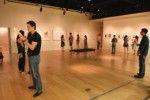
0
Donate to The Battalion
$2065
$5000
Contributed
Our Goal
Your donation will support the student journalists of Texas A&M University - College Station. Your contribution will allow us to purchase equipment and cover our annual website hosting costs, in addition to paying freelance staffers for their work, travel costs for coverage and more!





